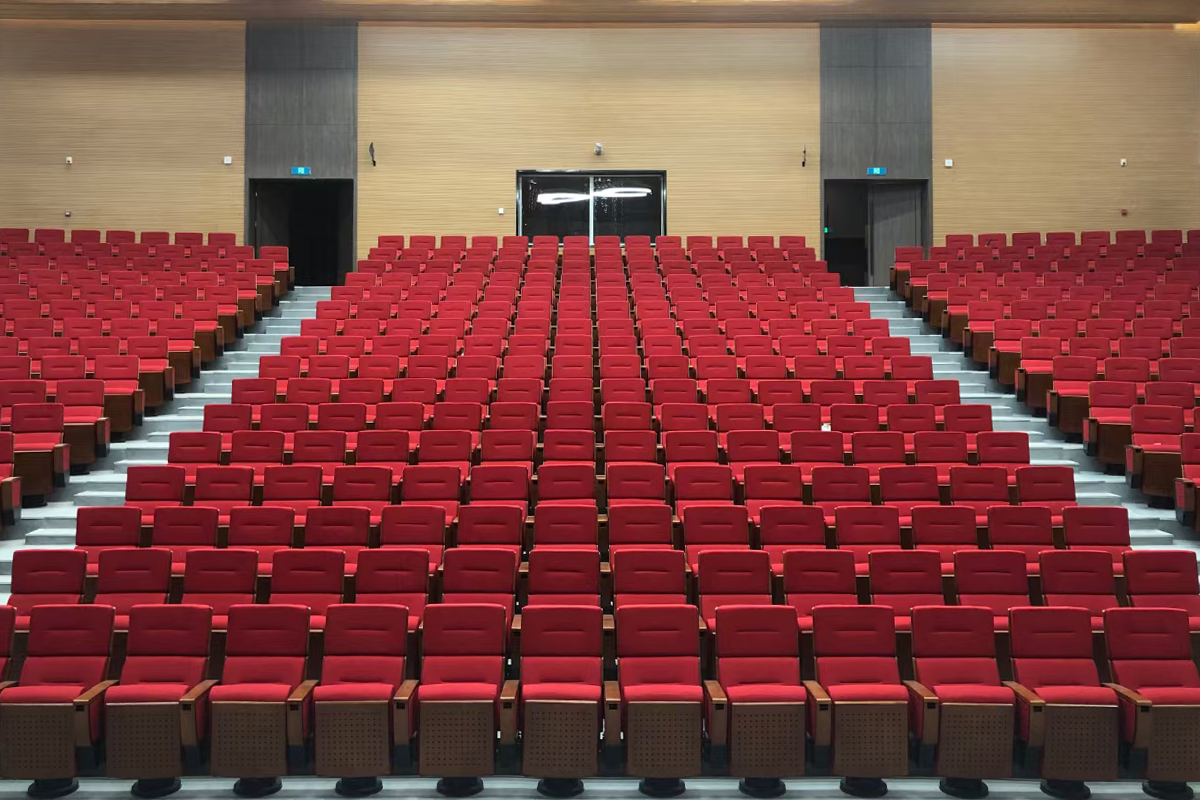Creating a welcoming and functional worship space is essential for fostering community, comfort, and engagement in any church. However, selecting and arranging seating can present unique challenges, especially as congregations grow, needs evolve, and spaces serve multiple purposes. Below, we explore five common church seating challenges—and practical strategies to address them.
1. Maximizing Space in Small or Irregularly Shaped Rooms
The Challenge: Many churches, especially older buildings or multi-use facilities, face limitations due to tight spaces, awkward layouts, or pillars/obstacles that disrupt church seating flow. Cramped seating can make congregants feel disconnected and limit capacity.
Solutions:
- Choose Space-Efficient Seating: Opt for slim-profile chairs or pews with narrow footprints. Stackable or foldable chairs are ideal for flexibility, allowing quick reconfiguration for events or storage.
- Prioritize Clear Pathways: Ensure aisles are wide enough (at least 36 inches) for safe movement, especially in emergency situations. Angling rows slightly can improve sightlines in irregular spaces.
- Use Vertical Space: Elevated platforms or tiered flooring can enhance visibility in rooms with low ceilings or obstructed views.
- Multi-Functional Layouts: Arrange the church chairs in modular clusters for small-group gatherings or rotate seating orientations to suit different service formats.
2. Balancing Comfort and Durability
The Challenge: Church seating must withstand heavy, frequent use (weekly services, events, community gatherings) while remaining comfortable for extended periods. Low-quality chairs can lead to discomfort, distractions, and frequent replacements.
Solutions:
- Invest in Quality Materials: Look for sturdy frames (steel or aluminum) and high-density foam cushions that retain shape over time. Water- and stain-resistant fabrics simplify cleaning.
- Ergonomic Design: Chairs with contoured seats, lumbar support, and slight reclines reduce fatigue. Pews with padded seats and backrests offer a traditional look without sacrificing comfort.
- Test Before Buying: Request samples or trial seating to assess comfort for your congregation’s needs—especially for elderly members or those with mobility challenges.
- Prioritize Maintenance: Choose upholstery that’s easy to clean, and establish a routine inspection schedule to tighten bolts, repair tears, or replace worn parts.
3. Adapting to Multi-Purpose Spaces
The Challenge: Modern churches often use their sanctuaries for diverse activities: worship services, concerts, community meals, classes, or childcare. Fixed pews or bulky chairs can limit a space’s versatility.
Solutions:
- Mobile Seating Options: Chairs with glides or casters enable quick rearrangement. Lightweight, stackable designs let you clear floors efficiently.
- Hybrid Solutions: Combine fixed seating (e.g., pews along walls) with movable chairs in the center. This preserves a traditional aesthetic while allowing flexibility.
- Storage Solutions: Wall-mounted chair racks or rolling carts make storage effortless. Consider fold-down seats or retractable bleachers for spaces that need to convert rapidly.
- Modular Accessories: Add wheeled tables, removable chair racks, or partition screens to redefine zones for different events.
4. Accommodating Growth and Changing Attendance
The Challenge: Congregations ebb and flow over time. Oversized seating can make a shrinking congregation feel dispersed, while cramped quarters deter newcomers during periods of growth.
Solutions:
- Scalable Seating Plans: Use chairs instead of fixed pews to adjust capacity easily. Section off parts of the sanctuary during low-attendance periods to create a cozier atmosphere.
- Expandable Layouts: Design seating in “phases.” For example, start with a core section of chairs and add overflow areas (livestream rooms, lobbies) with matching seating for peak times.
- Multi-Service Models: Offer multiple service times to distribute attendance evenly. Ensure seating is reconfigured or reset quickly between services.
- Future-Proof Materials: Select chairs with replaceable parts (cushions, armrests) to update seating as your congregation’s needs evolve, avoiding full replacements.
5. Managing Budget Constraints
The Challenge: High-quality seating is an investment, and many churches operate on tight budgets. However, opting for cheap, low-end solutions often leads to higher long-term costs from repairs or replacements.
Solutions:
- Phased Purchasing: Buy seating in batches over time, prioritizing high-traffic areas first. Many suppliers offer discounts for bulk orders.
- Consider Refurbished Options: Gently used or refurbished chairs can cut costs significantly. Ensure they meet durability and safety standards.
- Dual-Purpose Furniture: Choose chairs with built-in bookracks, offering storage for Bibles or programs. Pews with under-seat storage eliminate the need for additional shelving.
- Grants and Donations: Explore fundraising campaigns, memorial donations, or faith-based grants to offset costs. Highlight seating as a legacy investment for the community.
- Long-Term Value Over Price: Calculate cost per use over a chair’s lifespan. A $100 chair that lasts 15 years is more economical than a $50 chair replaced every 3 years.
Creating a Sacred Space That Serves Your Community
Church seating is more than functional—it shapes the worship experience, promotes inclusivity, and reflects your congregation’s values. By addressing these challenges proactively, you can create a space that adapts to your community’s needs while fostering connection and comfort.
Post time: Mar-12-2025








